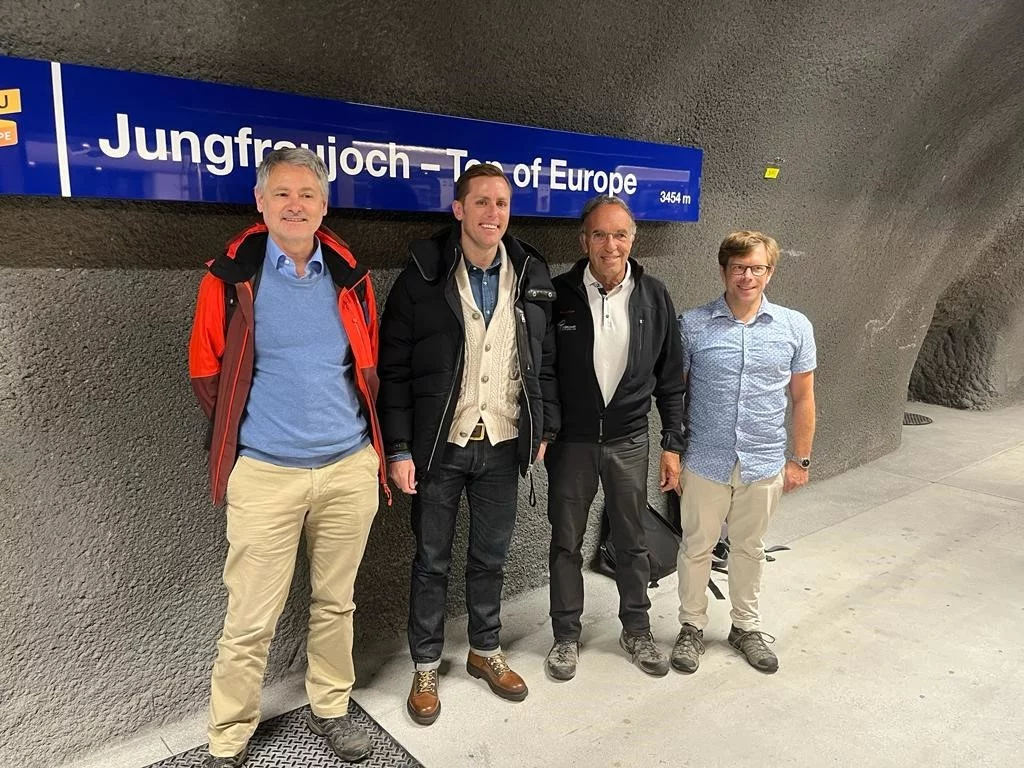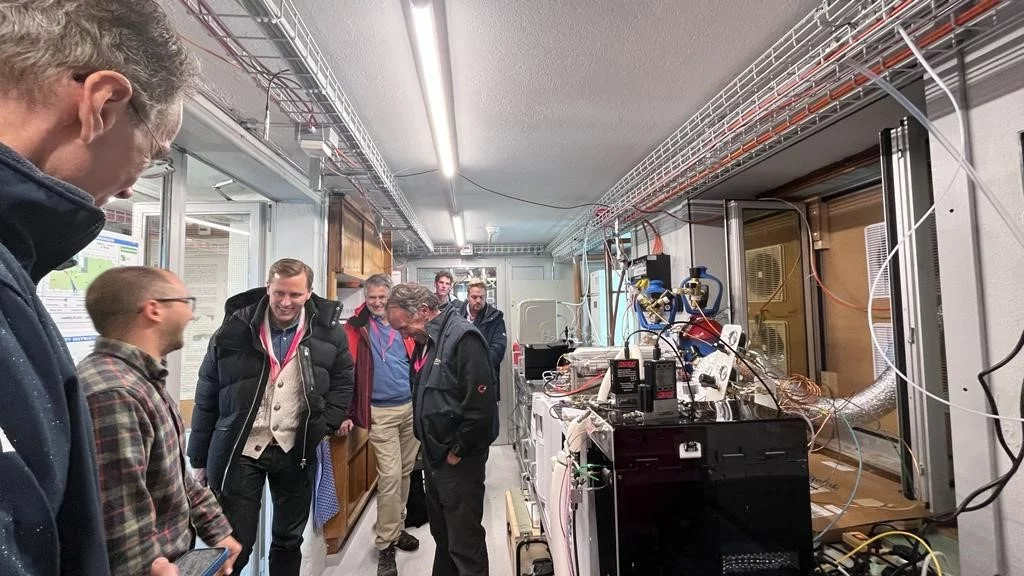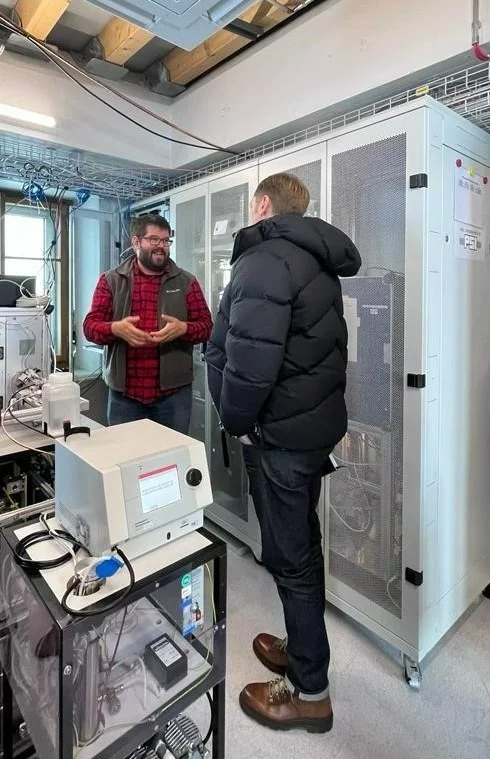On Friday 19th of August, US Ambassador to the Swiss confederation Scott Miller visited the Jungfraujoch, where PSI scientists conduct research at 3580 meters above sea level. After a warm reception in Grindelwald by Urs Keller, CEO of the Jungfrau Railway, the new Eiger Express Cable Car propelled the visitor group to the station Eigergletscher, followed by the ride on the cogwheel railway inside the Eiger mountain. Once at the top of Europe, the high-altitude research station Jungfraujoch and an ongoing measurement campaign were presented.
Topics of discussion between the Ambassador and the scientists were international research collaborations, renewable energies and climate. A particular focus lay on photovoltaic energy production in Switzerland, which was presented by Martin Pfisterer, hon pres Société Mont-Soleil as well as the global CO2 cycle and aerosol particles, which are often co-emitted during the use of energy sources, presented by Markus Leuenberger, director of High Alpine Research Stations Jungfraujoch (HFSJ). Martin Gysel-Beer, Group Head Aerosol Physics in the Laboratory for Atmospheric chemistry at the Paul Scherrer Institute presented an overview of PSI’s research on atmospheric aerosols embedded in the European Aerosol, Clouds and Trace Gas Research Infrastructure (ACTRIS) and the Global Atmosphere Watch Program (GAW).
These coordinated efforts aim at reducing uncertainty in future climate predictions caused by interactions of aerosols with solar radiation and clouds. After a lunch full of compelling debates, the tour continued to the laboratory in the striking Sphinx building. Benjamin Brem, Co-PI of the aerosol research at Jungfraujoch guided through the facilities and experimental setup for permanent observations while David Bell, Co-Investigator of the current measuring campaign introduced the current «Jungfraujoch Carbon Balance Campaign» with participants from several European countries. This study’s aim is to achieve a comprehensive characterization of gaseous and particulate carbonaceous species for the first time at such high altitude.
The stunning view on the high-alpine scenery was unfortunately obscured by clouds and precipitation, however, this made it possible to round off the tour with a couple of fresh snowballs despite an exceptionally warm and dry summer.
Text: Michelle Kalousek
Contact
Dr. Martin Gysel Beer
Paul Scherrer Institute
Forschungsstrasse 111
5232 Villigen PSI
Switzerland
Telephone: +41 56 310 41 68
Email: martin.gysel@psi.ch




